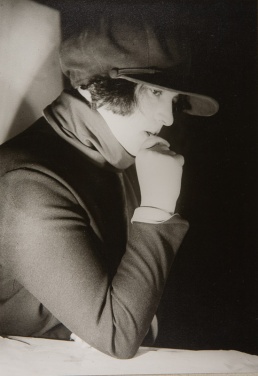Difference between revisions of "Esfir Shub"
| Line 7: | Line 7: | ||
Esfir Shub (Эсфи́рь Ильи́нична Шуб, 1894–1959) was a pioneering Soviet filmmaker and editor in both the mainstream and documentary fields. She is best known for her trilogy of films, ''Fall of the Romanov Dynasty'' (1927), ''The Great Road'' (1927), and ''the Russia of Nicholas II and Leo Tolstoy'' (1928). | Esfir Shub (Эсфи́рь Ильи́нична Шуб, 1894–1959) was a pioneering Soviet filmmaker and editor in both the mainstream and documentary fields. She is best known for her trilogy of films, ''Fall of the Romanov Dynasty'' (1927), ''The Great Road'' (1927), and ''the Russia of Nicholas II and Leo Tolstoy'' (1928). | ||
| − | Esfir Shub like [[Dziga Vertov]] and [[ | + | Esfir Shub like [[Dziga Vertov]] and [[Yelizaveta Svilova]] developed a documentary montage film style using already existing documentary material from pre-revolutionary, tsarist times that she researched to be combined with new shots. The material was put in context through montage and inter-titles. The Fall of the Romanov Dynasty was made in 1927 on occasion of the 10th anniversary of the October Revolution. Shub became a central figure of the Soviet documentary cinema, working at the Sovkino studios since 1926 and as film director at the Central Documentary Studio from 1942-1953. [http://www.irmielin.org/nothere/esfir-shub/] |
Sergei Emolinsky, a constructivist critic associated with Soviet art journal, ''[[LEF]]'', praised both Shub and Vertov equally for their different attitudes towards documentary film. He explained that while, “Vertov ‘threw himself on the given material, cutting it into numerous pieces, thus subordinating it to his imagination [..] Shub regarded each piece [shot] as to a self-sufficient, autonomous entity’.” This first-hand critique of the two methods indicate that Shub’s dedication to journalistic cinematography was the catalyst for what documentary film classifies today, compilation film. [http://en.wikipedia.org/wiki/Esfir_Shub#Documentaries] | Sergei Emolinsky, a constructivist critic associated with Soviet art journal, ''[[LEF]]'', praised both Shub and Vertov equally for their different attitudes towards documentary film. He explained that while, “Vertov ‘threw himself on the given material, cutting it into numerous pieces, thus subordinating it to his imagination [..] Shub regarded each piece [shot] as to a self-sufficient, autonomous entity’.” This first-hand critique of the two methods indicate that Shub’s dedication to journalistic cinematography was the catalyst for what documentary film classifies today, compilation film. [http://en.wikipedia.org/wiki/Esfir_Shub#Documentaries] | ||
Revision as of 13:36, 30 December 2013
 Esfir Shub in Soviet Screen 27 (July 1927). |

Esfir Shub (Эсфи́рь Ильи́нична Шуб, 1894–1959) was a pioneering Soviet filmmaker and editor in both the mainstream and documentary fields. She is best known for her trilogy of films, Fall of the Romanov Dynasty (1927), The Great Road (1927), and the Russia of Nicholas II and Leo Tolstoy (1928).
Esfir Shub like Dziga Vertov and Yelizaveta Svilova developed a documentary montage film style using already existing documentary material from pre-revolutionary, tsarist times that she researched to be combined with new shots. The material was put in context through montage and inter-titles. The Fall of the Romanov Dynasty was made in 1927 on occasion of the 10th anniversary of the October Revolution. Shub became a central figure of the Soviet documentary cinema, working at the Sovkino studios since 1926 and as film director at the Central Documentary Studio from 1942-1953. [1]
Sergei Emolinsky, a constructivist critic associated with Soviet art journal, LEF, praised both Shub and Vertov equally for their different attitudes towards documentary film. He explained that while, “Vertov ‘threw himself on the given material, cutting it into numerous pieces, thus subordinating it to his imagination [..] Shub regarded each piece [shot] as to a self-sufficient, autonomous entity’.” This first-hand critique of the two methods indicate that Shub’s dedication to journalistic cinematography was the catalyst for what documentary film classifies today, compilation film. [2]
External links
- The Fall of the Romanov Dynasty, dir. Esfir Schub, 1927.
- Prostitutka, dir. Oleg Frelikh, ed. Esfir Shub, 77 min, 1927.
- Shub at Women Film Pioneers Project
- Shub at RussianCinema.ru (in Russian)
- Shub at Wikipedia